From the melodic songs of the American Robin to the striking plumage of the Northern Cardinal, Michigan is home to a diverse array of bird species.
Whether you’re a seasoned birder or simply enjoy the beauty of nature, observing the state’s common birds is a must-do activity.
In this article, we explore 23 must-see birds found in Michigan, each with its own unique characteristics and behaviors that make them truly one-of-a-kind.
So, grab your binoculars and join us on a journey to discover the winged wonders of the Great Lakes State.
According to Forestry for Michigan Birds, the state of Michigan has at least 450 different bird species.
Whatever these figures are, they give us a sense of how many species there are.
Here is a list of a few of Michigan’s most well-known bird species.
| Image | Bird | Features | Price |
|---|---|---|---|
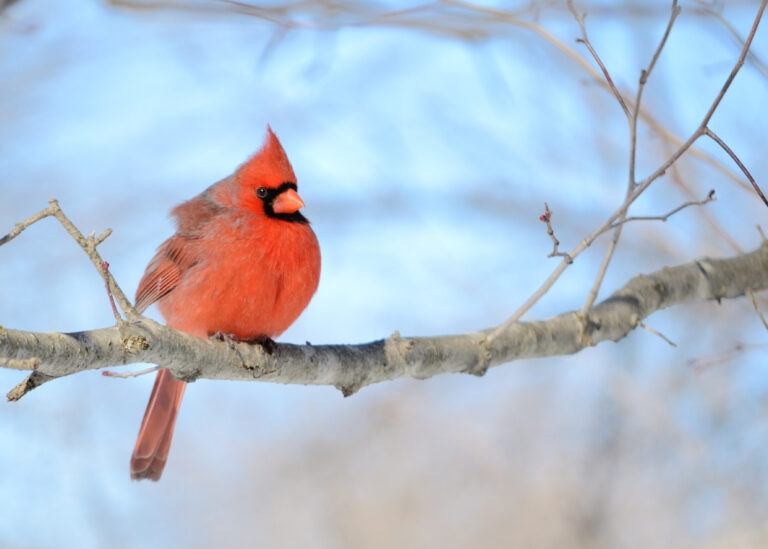 |
| 9.7 | Check Price |
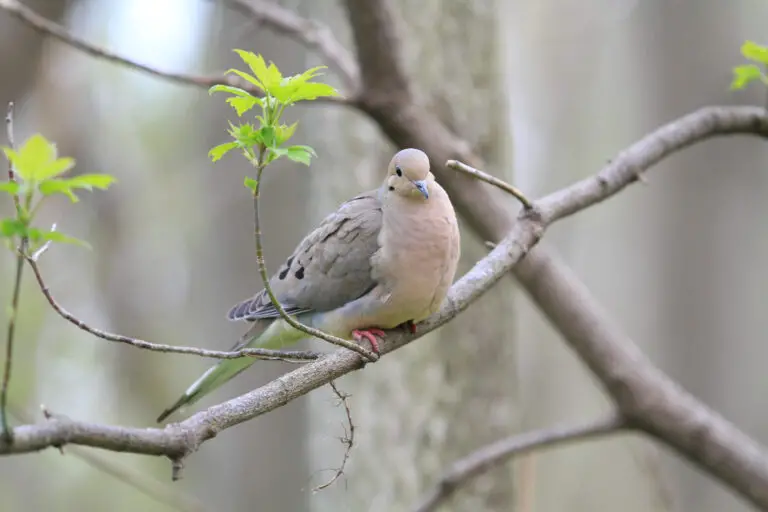 |
| 9.5 | Check Price |
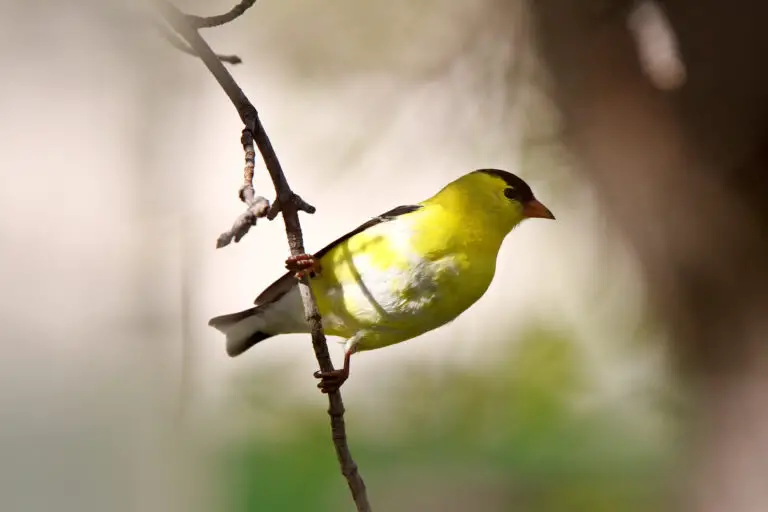 |
| 9.1 | Check Price |
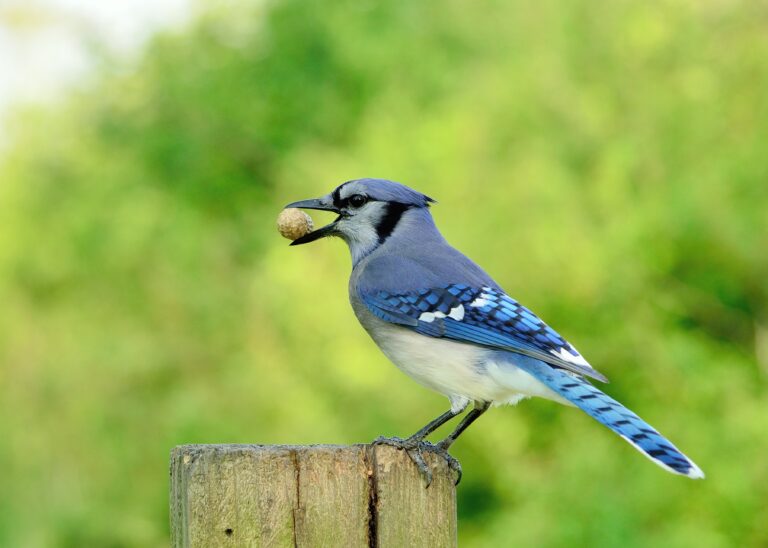 |
| 8.8 | Check Price |
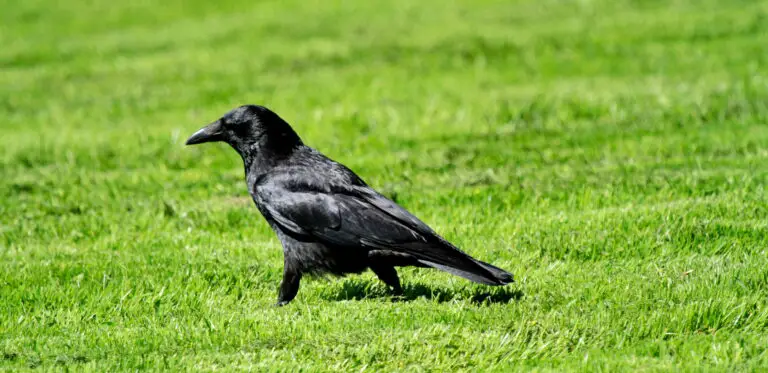 |
| 8.6 | Check Price |
 |
| 8.2 | Check Price |
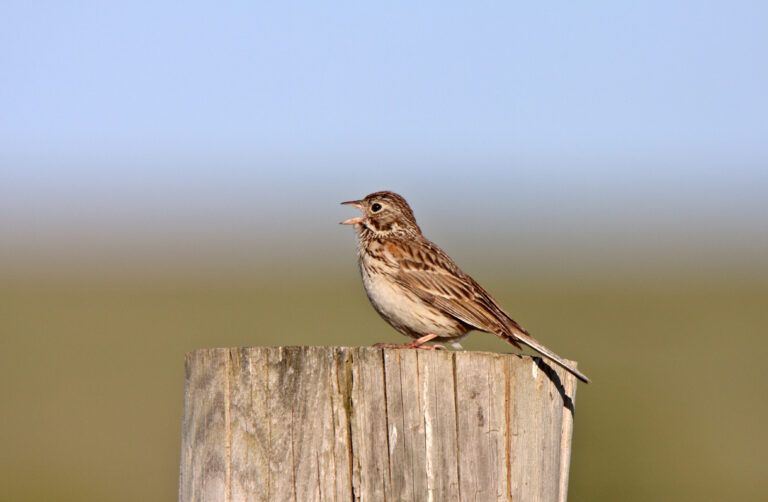 |
| 8 | Check Price |
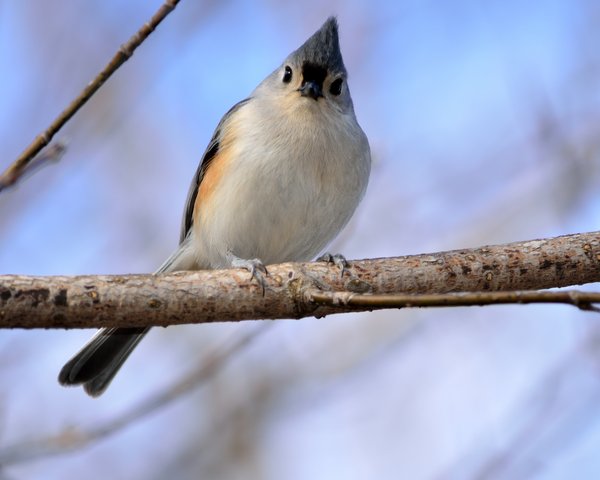 |
| 7.7 | Check Price |
 |
| 7.4 | Check Price |
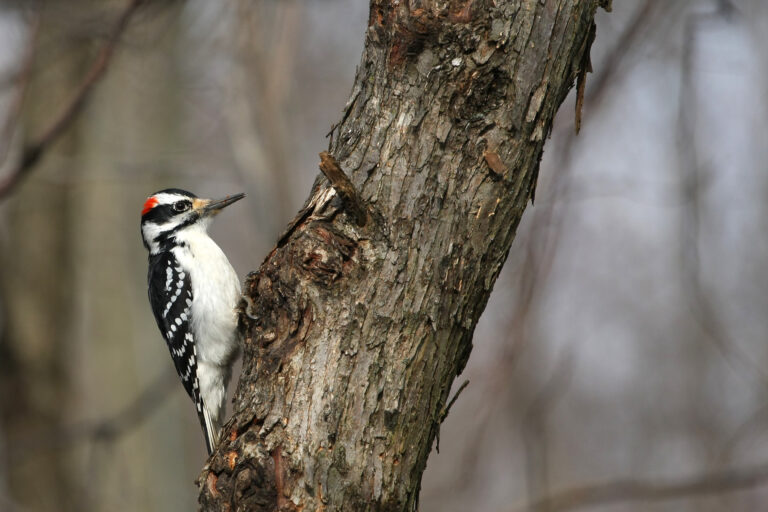 |
| 7.2 | Check Price |
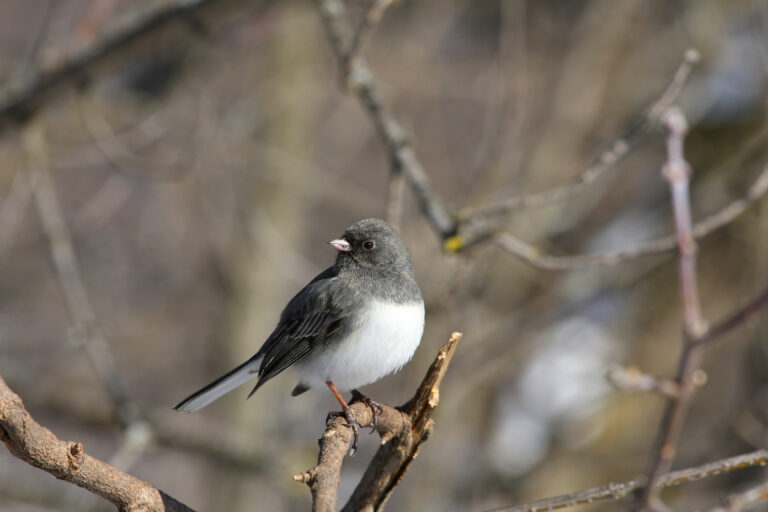 |
| 9.5 | Check Price |
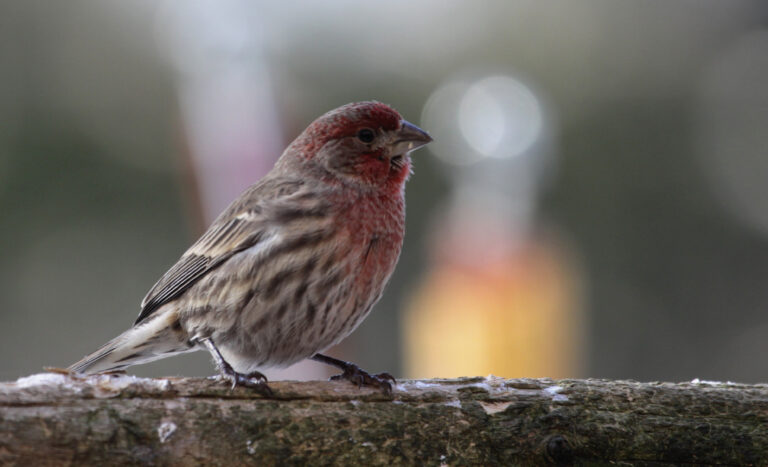 |
| 9.5 | Check Price |
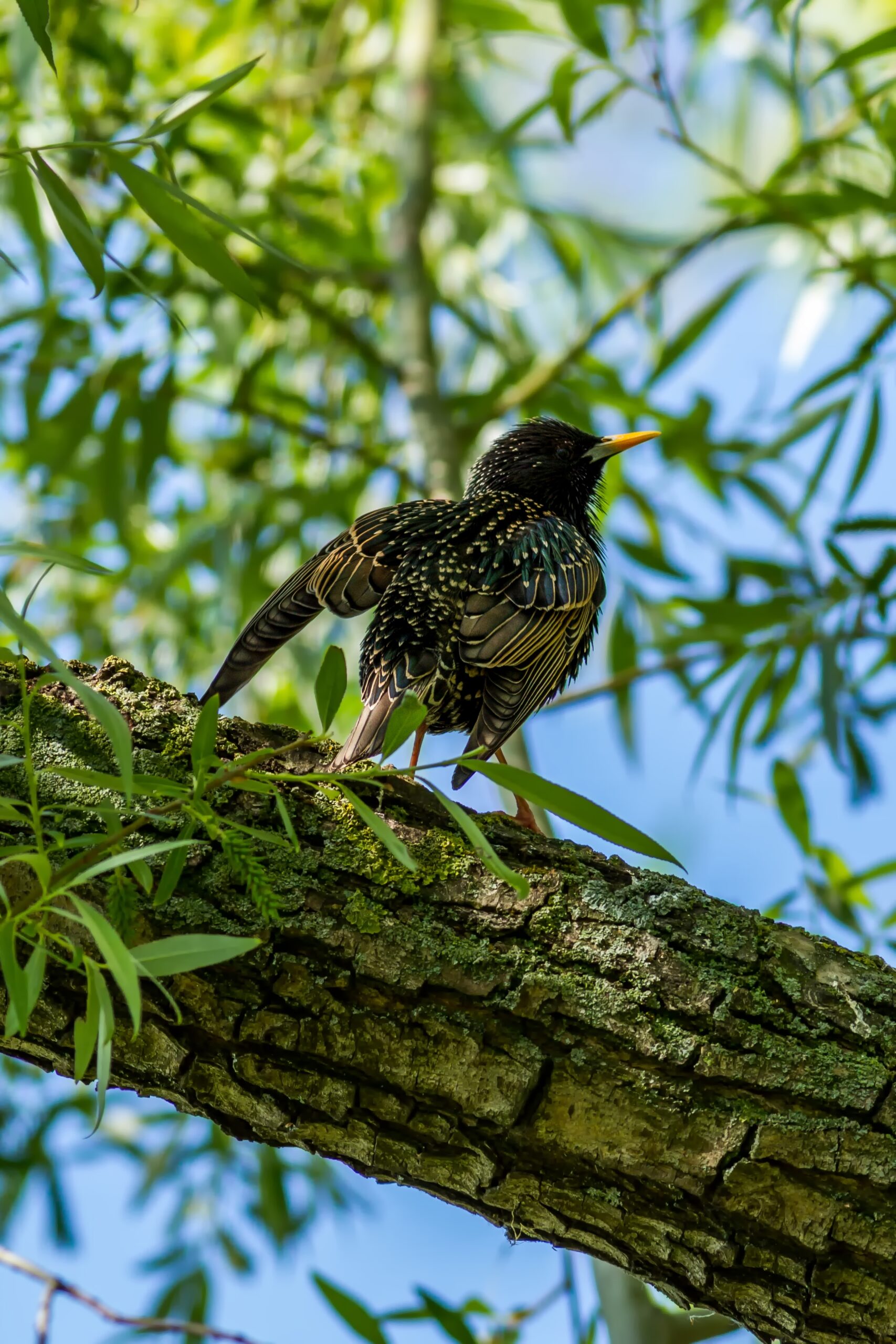 |
| 9.5 | Check Price |
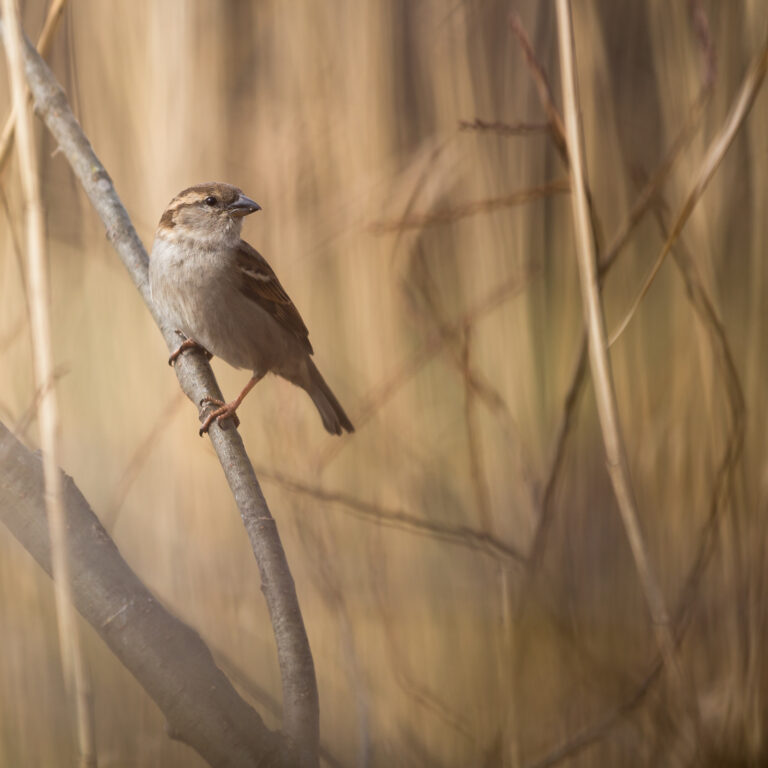 |
| 9.5 | Check Price |
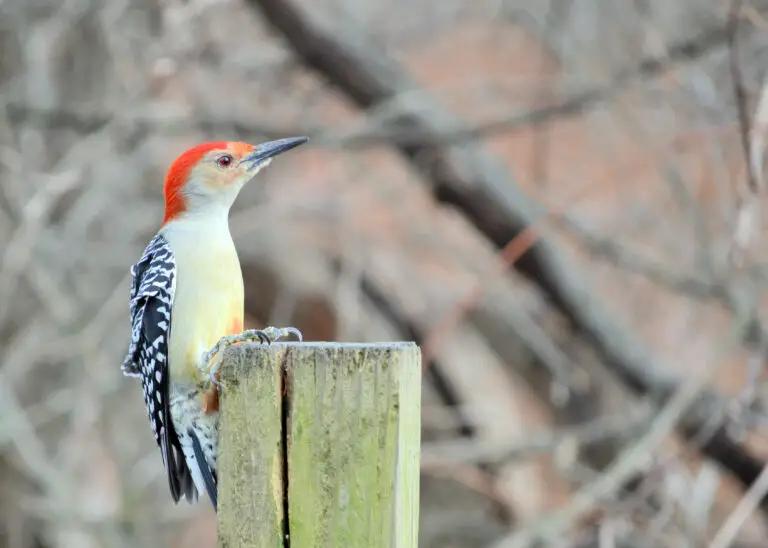 |
| 9.5 | Check Price |
 |
| 9.5 | Check Price |
 |
| 9.5 | Check Price |
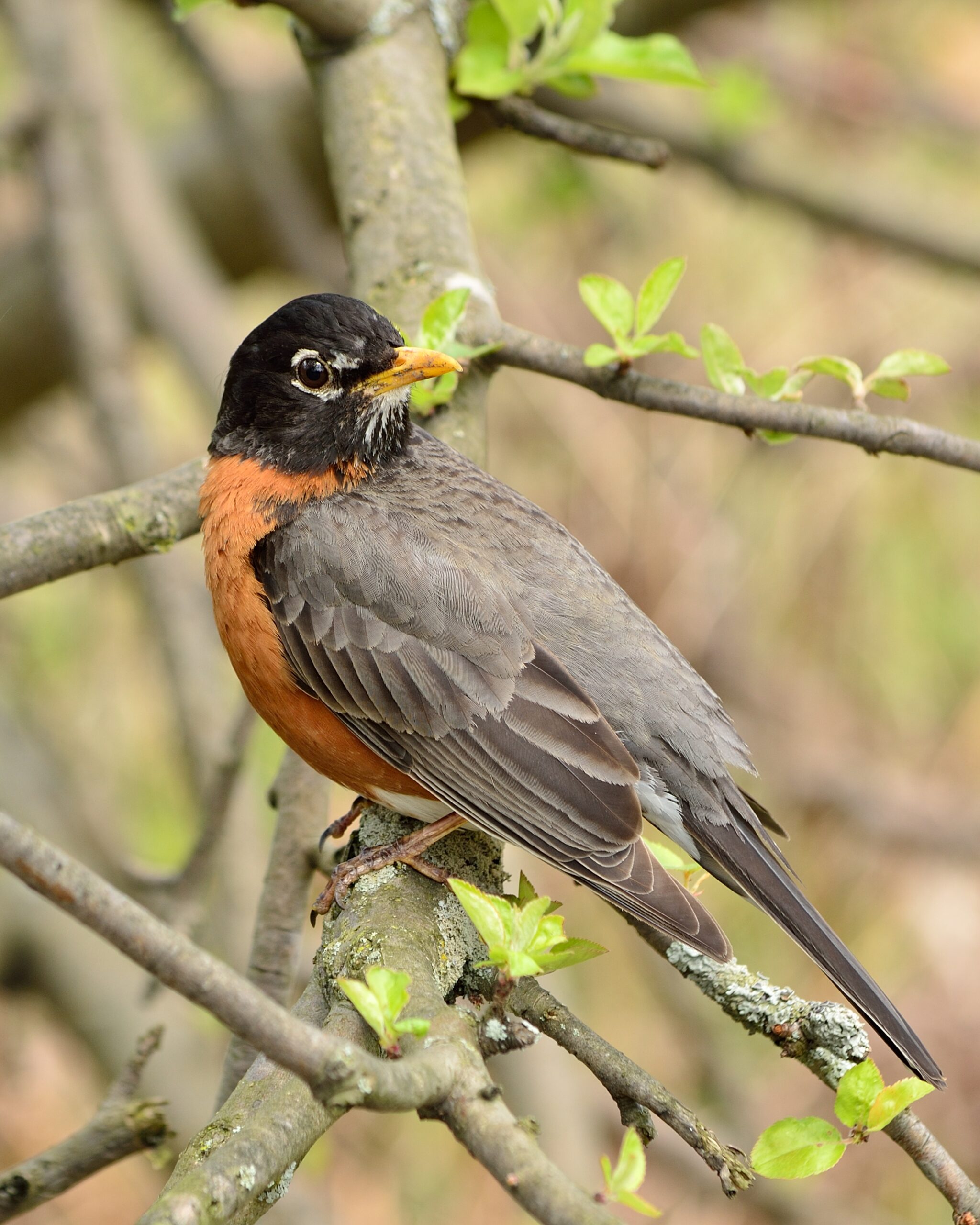 |
| 9.5 | Check Price |
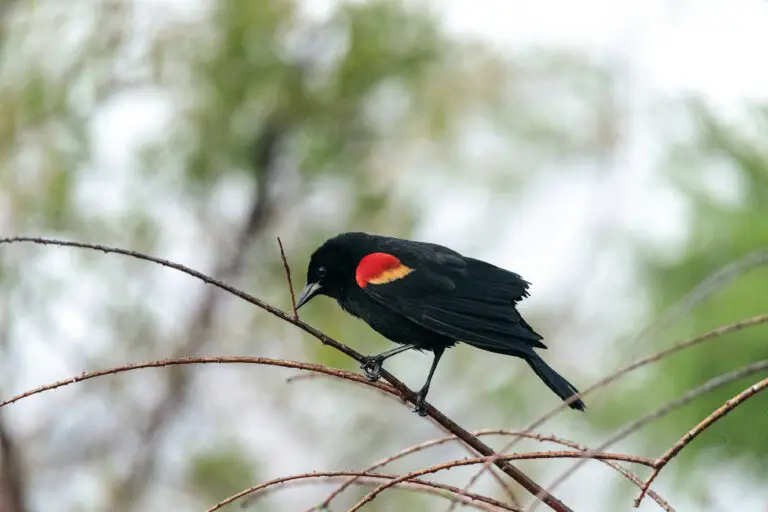 |
| 9.5 | Check Price |
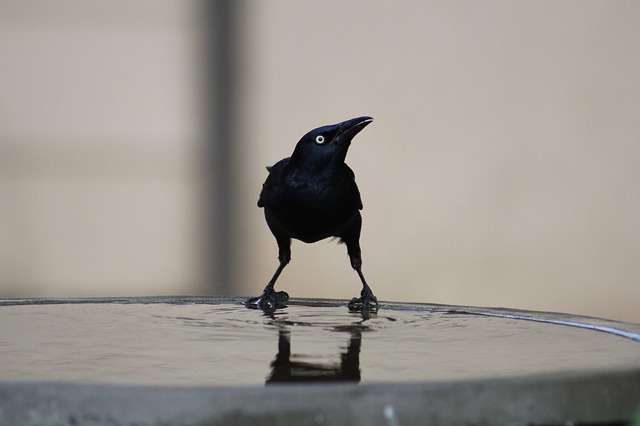 |
| 9.5 | Check Price |
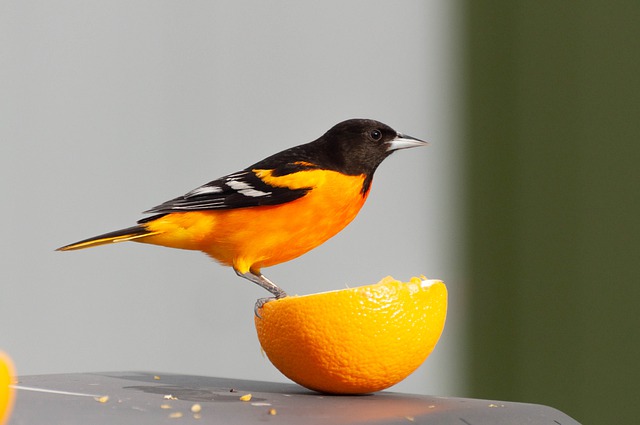 |
| 9.5 | Check Price |
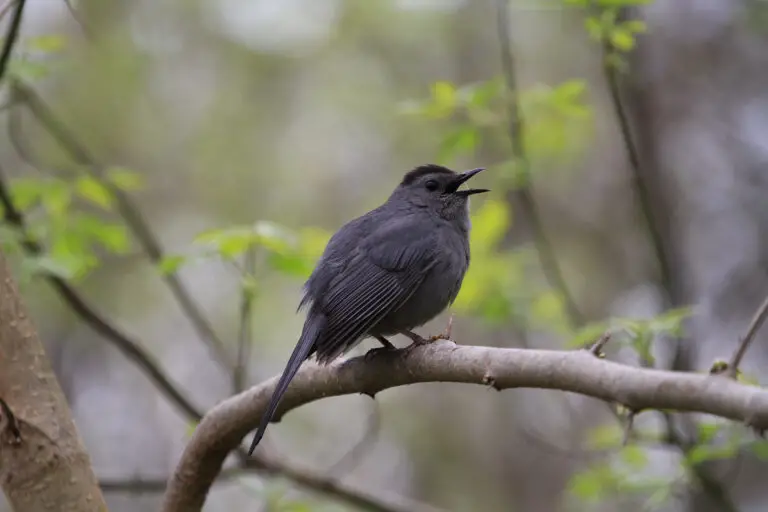 |
| 9.5 | Check Price |
 |
| 9.5 | Check Price |
If you don’t have the time to read the whole article, check out this video for a quick understanding.
Common Birds in Michigan
1. Northern Cardinal

Northern Cardinals (Cardinalis cardinalis) are one of the most well-known backyard birds in Michigan and around North America.
It is about 8.3 to 9.1 inches in length with a weight of approximately 1.5 to 1.7 ounces.
The wingspan of the Northern Cardinals is about 8.9 to 12.2 inches.
The male Northern Cardinal is easily recognizable by its bright red plumage, black face mask, and large conical bill.
The female is less colorful, with brownish-red plumage and a smaller bill.
The distinctive Mohawks and red-orange beaks of both sexes make them immediately recognized.
These birds live in Michigan all year and like eating from large trays and hopper feeders.
Seeds, berries, and nuts, such as black sunflower seeds, are among their favorite foods.
Below are the characteristics of the Northern Cardinal,
| Scientific Name | Cardinalis cardinalis |
| Length | 21 cm |
| Weight | 42 g |
| Wingspan | 25 cm |
| Habitat | woodlands, suburbs, and city parks |
| Food | seeds, fruits, insects, and spiders |
2. Mourning Dove
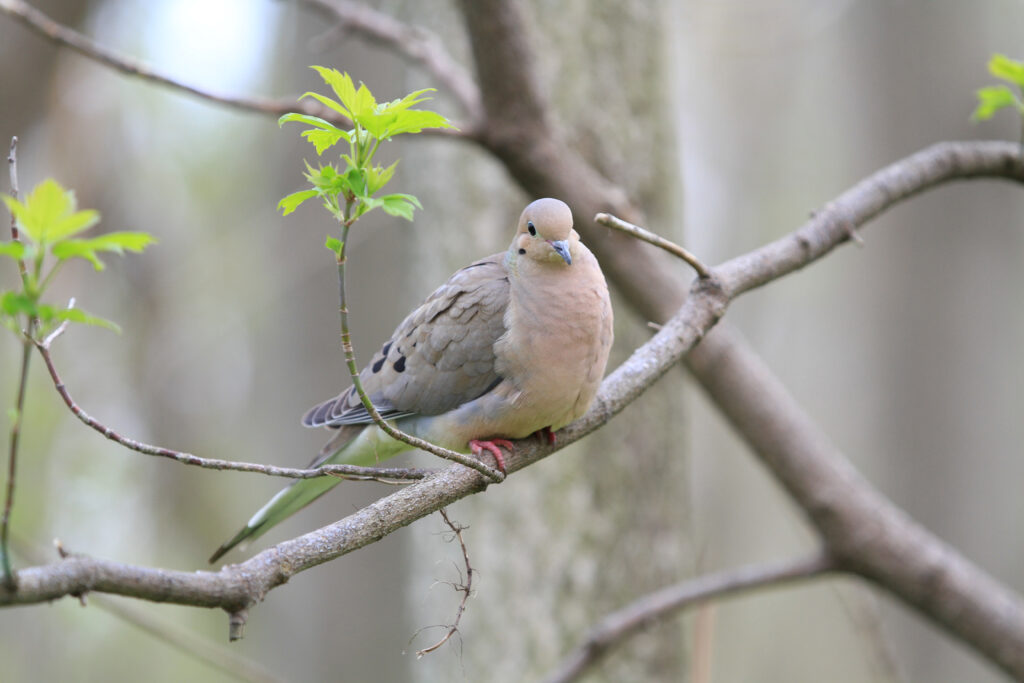
The Mourning Dove (Zenaida macroura) is a species of bird native to North America.
The Mourning Dove is nearly 9.1 to 13.4 inches in length, male with a weight of 3.4 ounces to 6.0 ounces and female with 3.0 oz. to 5.5 ounces.
The wingspan of a Mourning Dove is 17.7 inches.
Mourning Doves, which are somewhat more extensive than American Robins, frequently hang from wires, fences, or trees.
They may come to your tray feeder, but they’re more likely to be seen wandering about on the ground.
The grey bodies of these birds are topped with black markings.
A distinctive cyan-colored ring encircles their eyes, and their undersides are a soft peach tint.
Although they use feeders, these doves prefer to forage for seeds on the ground.
They are attracted to black sunflower seeds in tray feeders.
Below are the characteristics of the Mourning Dove,
| Scientific Name | Zenaida macroura |
| Length | 31 cm (12 in) |
| Weight | 110 g (3.9 oz) |
| Wingspan | 45 – 50 cm (18 – 20 in) |
| Habitat | Open areas, farmlands, deserts, suburban areas |
| Food | Seeds, grains, small fruits, insects |
3. American Goldfinch
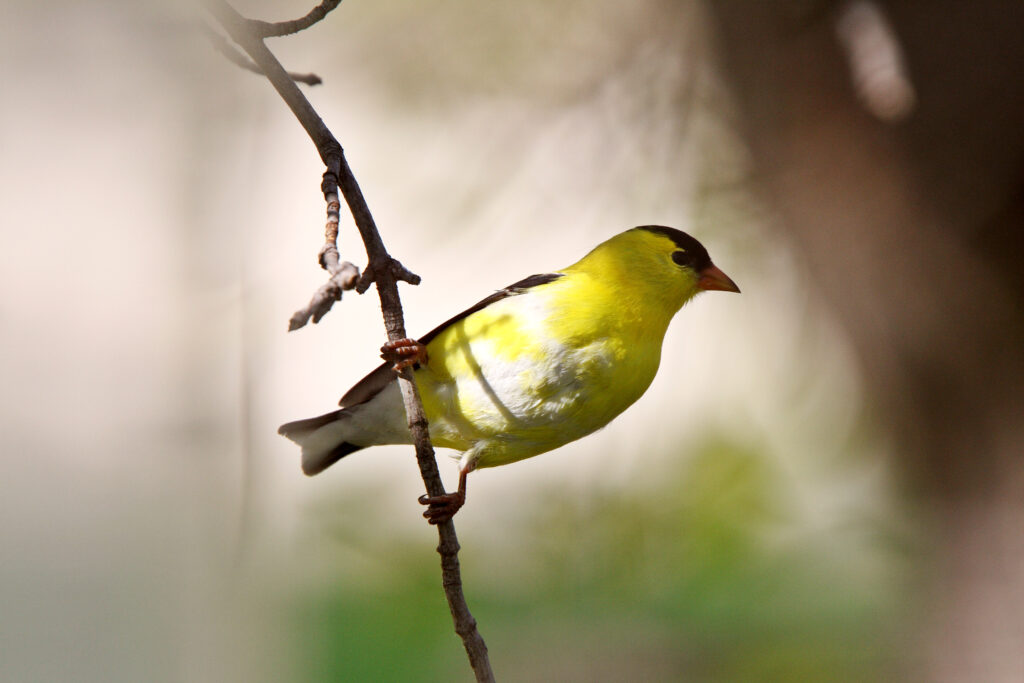
The American Goldfinch (Spinus tristis) is a species of bird native to North America.
The length of the American Goldfinch ranges from 4.3 to 5.5 inches, with a weight range from 0.39 ounces to 0.71 ounces.
The wingspan of the American Goldfinch is between 7.5 to 8.7 inches.
Many birdwatchers like the American Goldfinch, often known as the wild canary, especially during the summer.
The males have a brilliant lemon yellow color with a black crown and black wingtips in the summer, while olive or greyish-yellow feathers with brown bodies in winter.
Like males in winter, females have olive or greyish-yellow feathers and brown bodies, making them appear duller.
Chickadees are roughly the same size in both sexes.
In Michigan, you may observe these birds all year and especially like thistle feeders.
They may eat black sunflower seeds as well.
Below are the characteristics of the American Goldfinch,
| Scientific Name | Spinus tristis |
| Length | 13 – 14 cm (5 – 5.5 in) |
| Weight | 14 – 20 g (0.5 – 0.7 oz) |
| Wingspan | 21 – 25 cm (8 – 10 in) |
| Habitat | Deciduous forests, meadows, gardens, parks, orchards |
| Food | Seeds, small insects, aphids |
4. Blue Jay
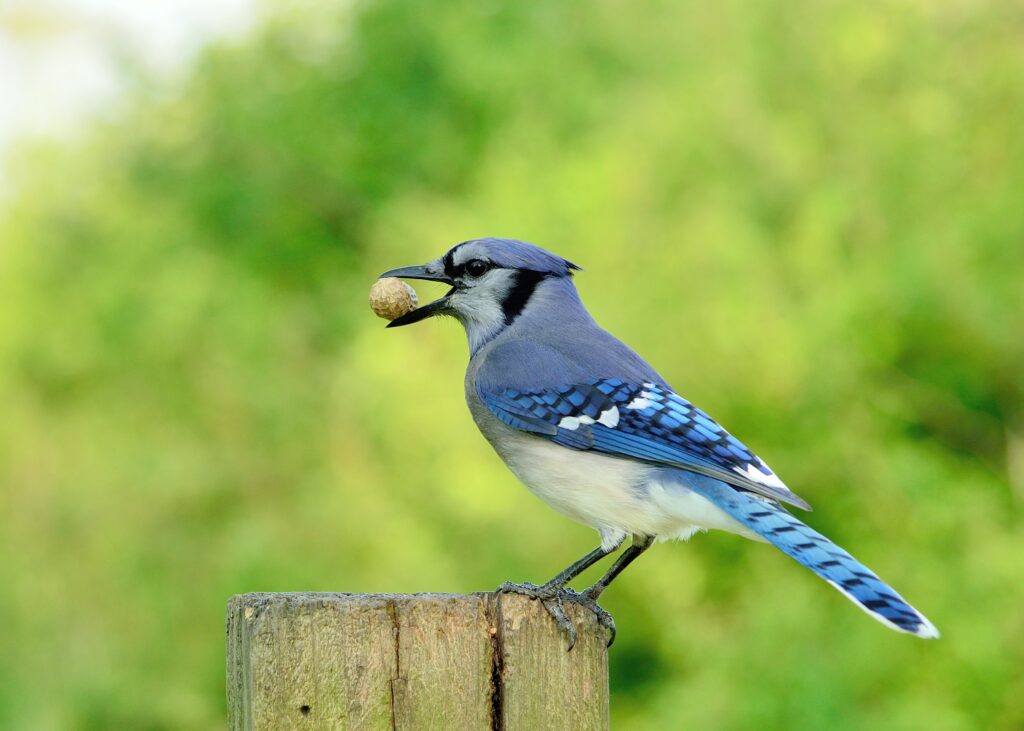
The Blue Jay (Cyanocitta cristata) is a species of bird native to North America.
It varies between 8.6 and 1.8 inches in length with a weight of 2.5 ounces to 3.5 ounces.
The wingspan of a Blue Jay is 13.3 to 16.9 inches.
The substantial fluffy blue crown that adorns the heads of Blue Jays gives them a unique appearance.
Their upper bodies are mainly blue, while their lower parts are off-white.
These birds also have a black circle marking the outline of their neck, giving them a necklace-like appearance.
These birds are regular visitors to platforms and peanut feeders throughout the year, as they are year-round residents of the whole state.
They consume nuts, seeds, and berries after cracking them open.
Below are the characteristics of the Blue Jay,
| Scientific Name | Cyanocitta cristata |
| Length | 28 – 30 cm (11 – 12 in) |
| Weight | 70 – 100 g (2.5 – 3.5 oz) |
| Wingspan | 46 – 56 cm (18 – 22 in) |
| Habitat | Deciduous and mixed forests, suburban areas, parks |
| Food | Acorns, nuts, seeds, insects, fruits, small vertebrates |
5. American Crow

The American Crow (Corvus brachyrhynchos) is a species of bird native to North America.
The size of the American Crow lies between 15.8 and 20.9 inches, with weight ranges from 11.2 to 21.9 ounces.
The bird has about 33.5 to 39.4-inch wingspan.
The bodies of American Crows are entirely black.
They’re big and have a distinctive cawing cry that many people would recognize.
Crows in the United States are also highly clever birds with outstanding problem-solving abilities.
They like to stay high in the trees to have a bird’s eye perspective of their surroundings.
These birds are year-round inhabitants of Michigan’s state parks.
Because of their enormous size, they are omnivorous and rarely frequent bird feeders.
Below are the characteristics of the American Crow,
| Scientific Name | Corvus brachyrhynchos |
| Length | 40 – 50 cm (16 – 20 in) |
| Weight | 300 – 600 g (10.6 – 21.2 oz) |
| Wingspan | 90 – 100 cm (35 – 39 in) |
| Habitat | Urban areas, forests, farmlands, open country |
| Food | Omnivorous – insects, carrion, waste grain, fruits, small mammals, and birds |
6. Downy Woodpecker

The Downy Woodpecker (Dryobates pubescens) is a species of bird native to North America.
Downy Woodpecker ranges from 5.5 to 7.1 inches in length, with weight lying between 0.7 ounces and 1.1 ounces.
The wingspan varies in the range of 9.8 to 12.2 inches.
They are Northern America’s smallest woodpeckers.
They are always among the first visitors to a fresh bird feeder, which may be found all year in Michigan.
The males’ heads have a distinctive red patch on the rear that makes it easy to distinguish them from females as it is not present in females.
Both sexes have black and white striped heads, but smaller bodies than the Hairy Woodpecker.
These birds eat from almost any bird feeder.
Their preferred meals are black sunflower seeds and strawberries.
Below are the characteristics of the Downy Woodpecker,
| Scientific Name | Dryobates pubescens |
| Length | 15 – 20 cm (6 – 8 in) |
| Weight | 20 – 28 g (0.7 – 1 oz) |
| Wingspan | 25 – 30 cm (10 – 12 in) |
| Habitat | Woodlands, forests, parks, residential areas |
| Food | Insects, spiders, sap, fruits, nuts |
7. Song Sparrow
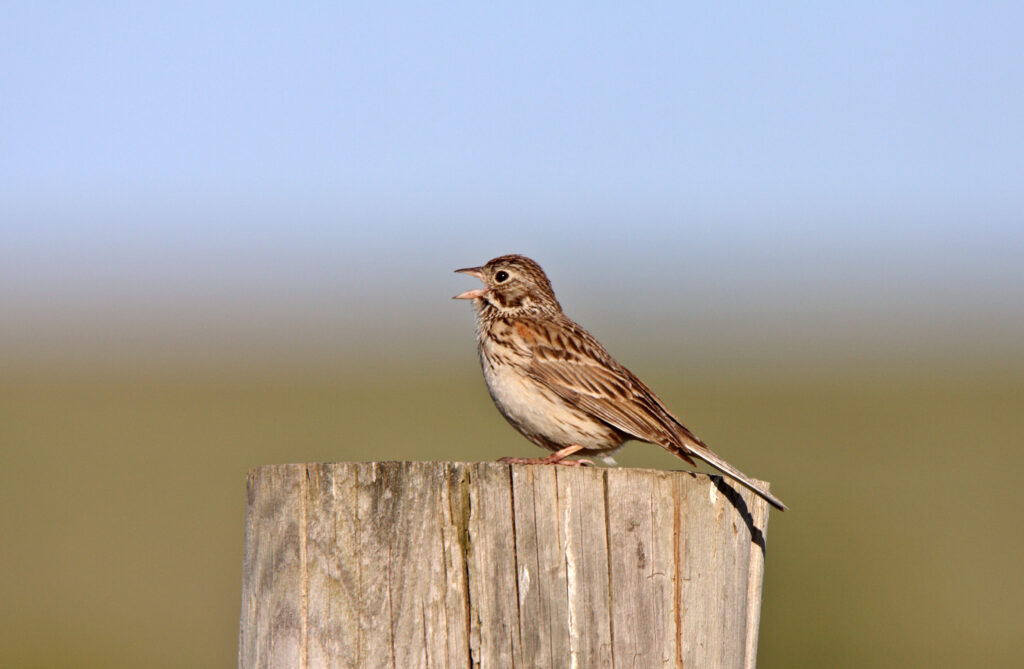
The Song Sparrow (Melospiza melodia) is a species of bird native to North America.
The Song Sparrow is a medium-sized bird with a streaked brown back and gray-brown breast.
Song Sparrow and 7.1 to 9.4 inches of wingspan weight vary from 0.4 to 1.9 ounces.
Similar to other brown-streaked sparrows, these birds have mostly brown bodies with deep brown streaks on their white underparts.
They may be found throughout North America, with different plumage depending on the area.
Song Sparrow males utilize their unique songs to attract females and defend their nests.
They may be seen all year on Michigan’s Lower Peninsula.
They prefer to consume a variety of seeds; therefore, they visit tray and hopper bird feeders.
Below are the characteristics of the Song Sparrow,
| Scientific Name | Melospiza melodia |
| Length | 15 – 20 cm (6 – 8 in) |
| Weight | 19 – 27 g (0.67 – 0.95 oz) |
| Wingspan | 22 – 27 cm (9 – 11 in) |
| Habitat | Brushy fields, wet meadows, marshes, edges of forests |
| Food | Seeds, insects, spiders, snails |
8. Tufted Titmouse

The Tufted Titmouse (Baeolophus bicolor) is a species of bird native to North America.
The size of these birds lies in the range of 5.5 to 6.3 inches in length and 7.9 to 10.2 inches in wingspan.
Their weight ranges from 0.6 to 0.9 ounces.
In Michigan, these tiny birds are familiar visitors to backyards and feeders.
They have unique tiny Mohawks, similar to the Northern Cardinal, that might help you identify them.
Tufted Titmice have silver bodies from the top and greyish-white bodies from the bottom.
A black mark can also be seen immediately above their black beaks.
You can find these birds all year on the Lower Peninsula. They are, however, uncommon on the Upper Peninsula.
Below are the characteristics of the Tufted Titmouse,
| Scientific Name | Baeolophus bicolor |
| Length | 17 – 21 cm (7 – 8 in) |
| Weight | 33 – 47 g (1.2 – 1.7 oz) |
| Wingspan | 27 – 31 cm (11 – 12 in) |
| Habitat | Deciduous forests, woodlands, suburban areas |
| Food | Seeds, nuts, insects, caterpillars, berries |
9. Northern Flicker

The Northern Flicker (Colaptes auratus) is a species of bird native to North America.
Their length lies from 10 to 12.2 inches having a wingspan ranging from 5 to 20.1 inches.
The weight of these birds is between 9 and 5.6 ounces.
Northern Flickers may be seen in backyards all across the United States, not only in Michigan.
They range in size from medium to giant and prefer to eat insects.
As a result, they aren’t frequent feeders.
They are distinguished by a red patch on the back of their necks, black patches on their underparts, striped grey, and black wings, and an all-black headband.
Yellow-shafted Northern Flickers are found in Michigan and feature yellow feathers on the underside of their wings.
These birds can be seen all year on the Lower Peninsula, but only during the mating season north of there.
Consider installing a birdbath in your backyard if you want to attract these birds.
Below are the characteristics of the Northern Flicker,
| Scientific Name | Colaptes auratus |
| Length | 40 – 44 cm (16 – 17 in) |
| Weight | 140 – 250 g (5 – 8.8 oz) |
| Wingspan | 56 – 60 cm (22 – 24 in) |
| Habitat | Open woodlands, forests, parks, suburban areas |
| Food | Ants, beetles, caterpillars, fruits, nuts, seeds |
10. Hairy Woodpecker
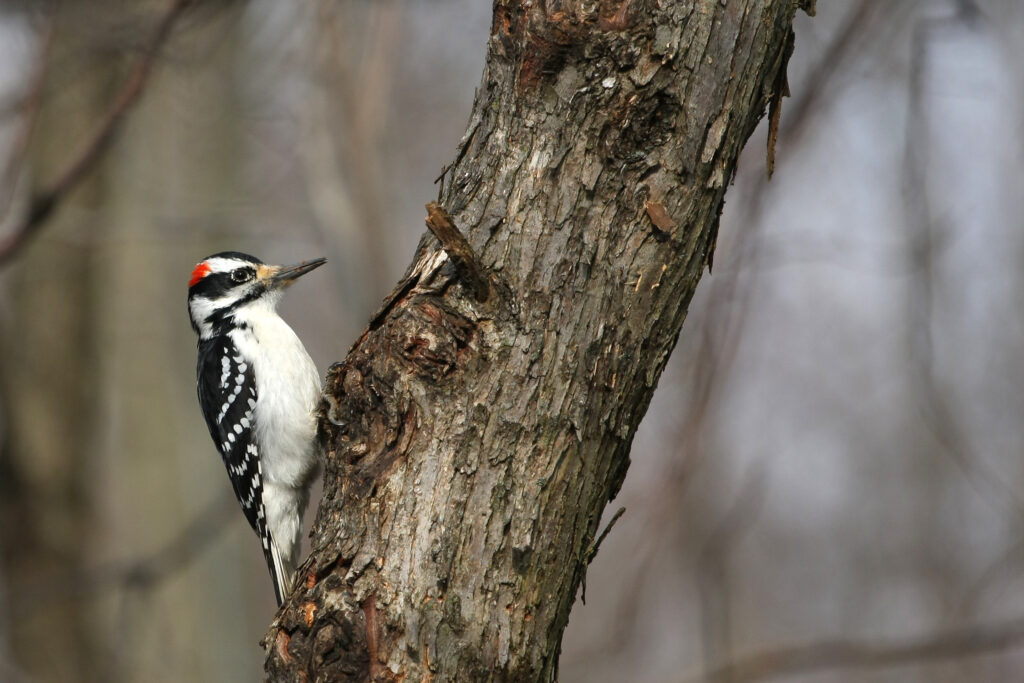
The Hairy Woodpecker (Picoides villosus) is a species of bird native to North America.
These birds range from 1 to 10.2 inches in length and 10 to 16.1 inches in wingspan.
Their weight is about 2. 4 ounces to 3.4 ounces.
Hairy Woodpeckers seem similar to Downy Woodpeckers, but they are larger and lack the red mark on the back of the neck.
Throughout the year, both species can be spotted in the same locations in the state.
Although Hairy Woodpeckers do not visit bird feeders, they are drawn to seed and suet feeders.
Below are the characteristics of the Hairy Woodpecker,
| Scientific Name | Dryobates villosus |
| Length | 20 – 26 cm (8 – 10 in) |
| Weight | 50 – 85 g (1.8 – 3 oz) |
| Wingspan | 35 – 44 cm (14 – 17 in) |
| Habitat | Coniferous and deciduous forests, parks, residential areas |
| Food | Insects, spiders, sap, fruits, nuts |
11. Dark-Eyed Junco

The Dark-Eyed Junco (Junco hyemalis) is a species of bird native to North America.
Their body is from 5.5 to 6.3 inches long, with a 7.1 to 9.8 inches wingspan.
The weight of Dark-Eyed Junco varies from 0.6 to 1.1 ounces.
Because Dark-Eyed Juncos migrate to Canada during the summer, they are considered winter birds in the United States.
The bodies are dark with a darker hue on top that fades into lighter grey and white as they approach the bottom.
Females and immature Juncos, on the other hand, are buffy brown. Pink beaks are found in both sexes.
You may find these birds all year in Northern Michigan among forested regions and woods.
They prefer to remain close to the ground and hop about a lot.
Juncos like to comb the ground for food; hence they don’t attend feeders.
Scattering seeds can be an efficient way to attract these birds.
Below are the characteristics of the Dark-Eyed Junco,
| Scientific Name | Junco hyemalis |
| Length | 16 – 20 cm (6 – 8 in) |
| Weight | 20 – 25 g (0.71 – 0.88 oz) |
| Wingspan | 20 – 25 cm (8 – 10 in) |
| Habitat | Coniferous and deciduous forests, shrublands, gardens |
| Food | Seeds, insects, spiders |
12. House Finch
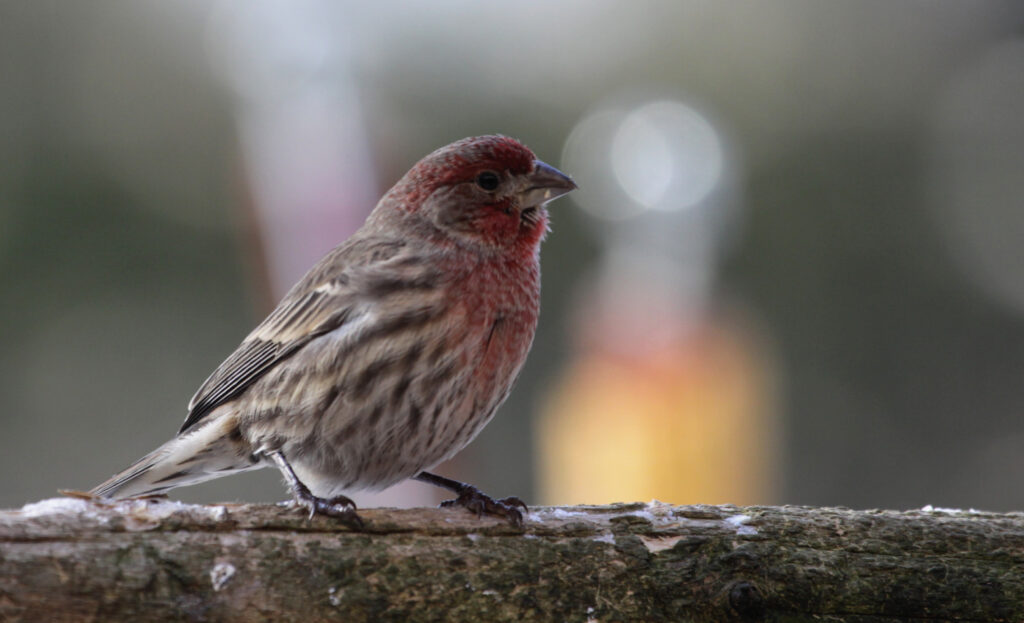
The House Finch (Haemorhous mexicanus) is a species of bird native to North America.
These birds vary in size from 4.9 to 6.1 inches, having a wingspan that ranges from 8.1 to 10.5 inches.
The weight is between 0.6 ounces and 0.9 ounces.
The House Finch is another backyard bird that you may expect to see regularly in Michigan.
Although becoming an exotic species, they aren’t as despised as House Sparrows since they aren’t as damaging.
These birds are exclusively found on the Lower Peninsula and may rush to your feeders in the form of hordes and flocks.
Their male has a reddish hue on their heads and chests and is simpler to recognize than females, who are all brown.
These birds are more likely than Goldfinches to attend feeders.
Black sunflower seeds work well for luring them in.
Below are the characteristics of the House Finch,
| Scientific Name | Haemorhous mexicanus |
| Length | 12 – 15 cm (5 – 6 in) |
| Weight | 20 – 29 g (0.71 – 1.02 oz) |
| Wingspan | 20 – 25 cm (8 – 10 in) |
| Habitat | Urban and suburban areas, parks, gardens |
| Food | Seeds, fruits, insects |
13. European Starling
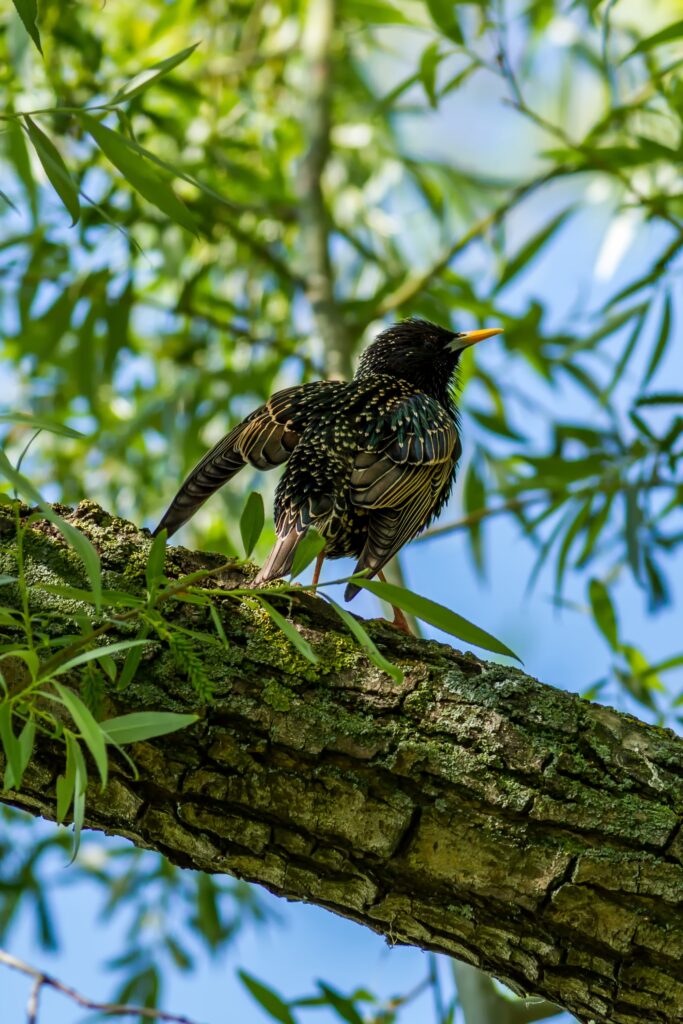
The European Starling (Sturnus vulgaris) is a species of bird native to Europe and Asia but introduced to North America.
They vary in length from 7.9 to 9.1 inches and in weight from 2.1 to 3.4 ounces.
They have a wingspan range of 12.2 to 15.8 inches.
European Starlings, which are frequently seen as pests, are prime examples of invasive species.
Hundred of these birds were released in New York in the 1890s. They’ve taken the county by storm since then due to their extraordinary adaptive abilities.
They wreak havoc on other birds by destroying their nests and killing their young; their beauty masks their destructive behavior.
The dark-colored bodies of these birds generate a combination of purple, green, and blue iridescence in daylight, giving them a fascinating appearance.
They have yellow beaks and feet, as well as white spots on their wings and down their backs.
They’re year-round residents who may be found all across the state.
Furthermore, their adaptability permits them to consume almost everything.
You don’t need to provide any specific food to lure these birds; they’ll come to your backyard on their own.
Below are the characteristics of the European Starling,
| Scientific Name | Sturnus vulgaris |
| Length | 20 – 24 cm (8 – 9.5 in) |
| Weight | 80 – 100 g (2.8 – 3.5 oz) |
| Wingspan | 32 – 35 cm (13 – 14 in) |
| Habitat | Urban and suburban areas, agricultural lands, woodlands |
| Food | Insects, fruits, seeds, nectar |
14. House Sparrow
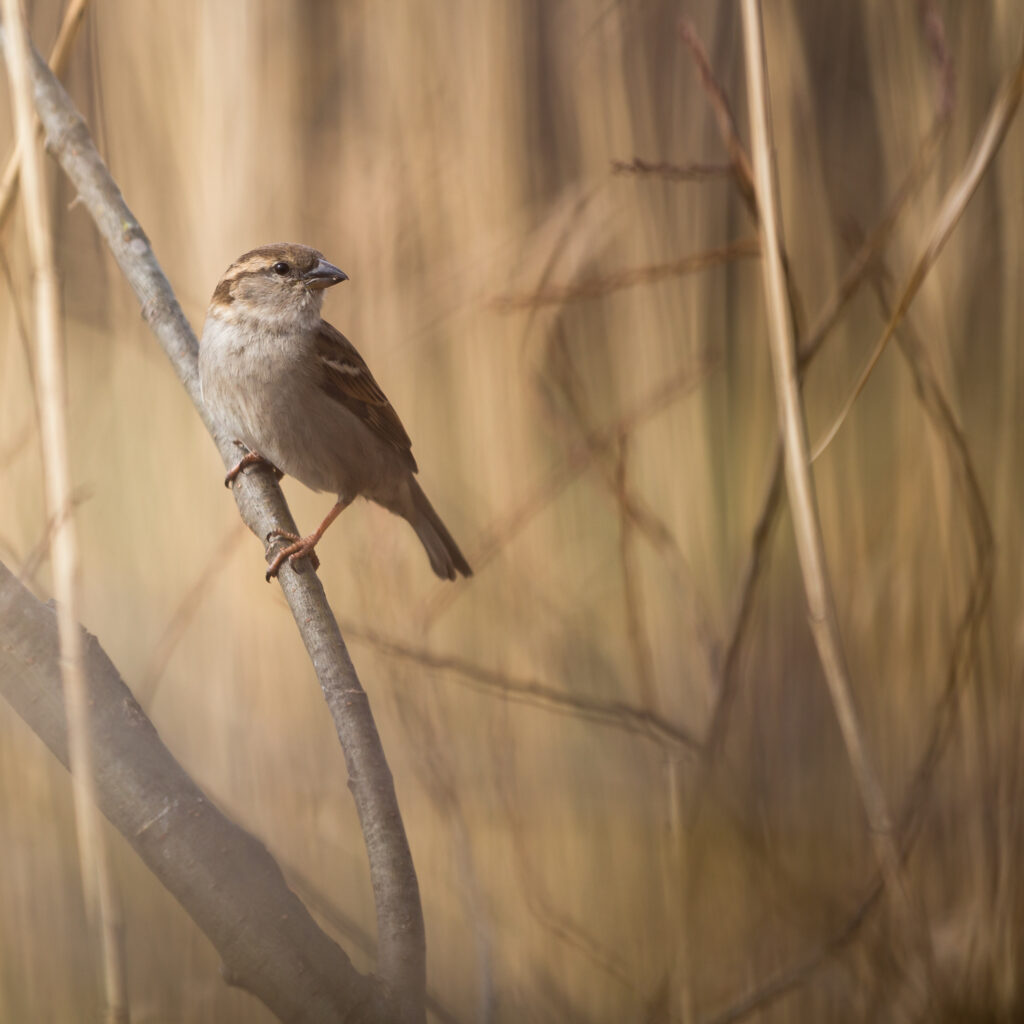
The house sparrow’s scientific name is Passer domesticus.
House sparrows have a length ranging from 5.9 to 6.7 inches and a wingspan from 7.5 to 9.8 inches.
They have a weight lying within the range of 0.9 to 1.1 ounces.
House Sparrows are typically seen as pests. Except for starlings, these are the only wild bird species in the United States that can be lawfully captured and put down painlessly.
They were also made available for free in New York, and they have now spread across the country.
They have a reputation for being aggressive toward other birds, particularly in their nesting grounds.
The bodies of these invading birds are brown, with black and dark brown striping on the chests and wings.
They’re year-round residents who may be found all across the state.
They’ll consume almost anything, putting native species at risk.
Below are the characteristics of the House Sparrow,
| Scientific Name | Passer domesticus |
| Length | 14 – 16 cm (5.5 – 6.3 in) |
| Weight | 20 – 30 g (0.7 – 1.06 oz) |
| Wingspan | 20 – 25 cm (8 – 10 in) |
| Habitat | Urban and suburban areas, agricultural lands, parks |
| Food | Seeds, insects, spiders, berries |
15. Red-Bellied Woodpecker
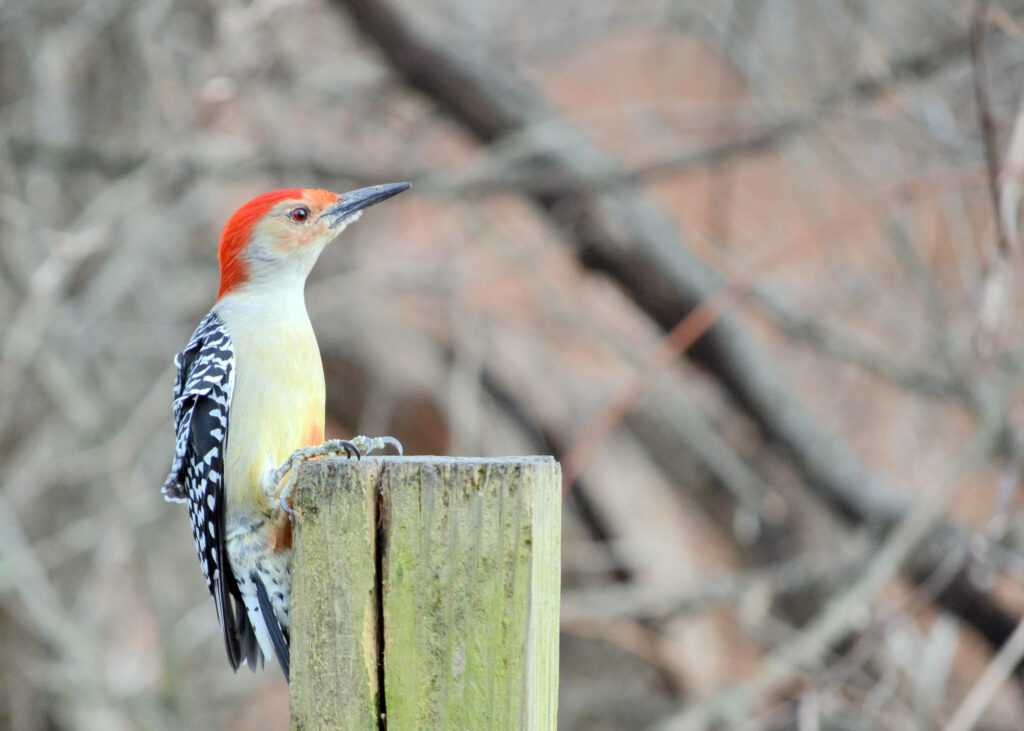
The red-bellied woodpecker’s scientific name is Melanerpes carolinus.
These species of Woodpecker range in size from 9.2 to 10.3 inches and 15.7 to 17.8 inches of wingspan.
Their weight lies between the capacity of 2.2 to 3.2 ounces.
These medium-sized woodpeckers are commonly observed in backyards and at bird feeders.
The apparent crimson on their bodies, despite their red-bellied name, is a brilliant stripe that runs down the back of their heads and the length of their necks.
The majority of their tummy is white, with a red-washed patch visible if you look closely.
Their wings, which are adorned with distinctive black and white barring, are another distinguishing trait of these birds.
Lower Michigan is home to the majority of Red-bellied Woodpeckers.
They prefer suet feeders, although they may occasionally visit seed feeders.
Below are the characteristics of the Red-Bellied Woodpecker,
| Scientific Name | Melanerpes carolinus |
| Length | 25 – 28 cm (9.8 – 11 in) |
| Weight | 70 – 100 g (2.5 – 3.5 oz) |
| Wingspan | 40 – 46 cm (16 – 18 in) |
| Habitat | Deciduous and mixed forests, woodlands, parks |
| Food | Insects, nuts, fruits, sap |
16. White-breasted Nuthatches

The white-breasted nuthatch’s scientific name is Sitta carolinensis.
White-Breasted 5.1 to 5.5 inches in length and 7.9 to 10.6 inches in wingspan.
Their weight is approximately 0.6 ounces to 1.1 ounces.
The White-Breasted Nuthatch is a famous backyard bird in Michigan, and you may find it all year round.
Nuthatches are so named because they bury nuts beneath tree bark and then hatch them out with their sharp beaks.
To recognize these birds, have a conspicuous black stripe on the top of their heads, grey and black wings, and a white face and belly.
These birds will eat from almost any bird feeder.
Their preferred meals are black sunflower seeds and insects.
Below are the characteristics of the White-breasted Nuthatches,
| Scientific Name | Sitta carolinensis |
| Length | 12 – 14 cm (4.7 – 5.5 in) |
| Weight | 21 – 26 g (0.74 – 0.92 oz) |
| Wingspan | 20 – 25 cm (8 – 10 in) |
| Habitat | Coniferous and mixed forests, woodlands, parks |
| Food | Seeds, nuts, insects, spiders, sap |
17. Black Cap Chickadee
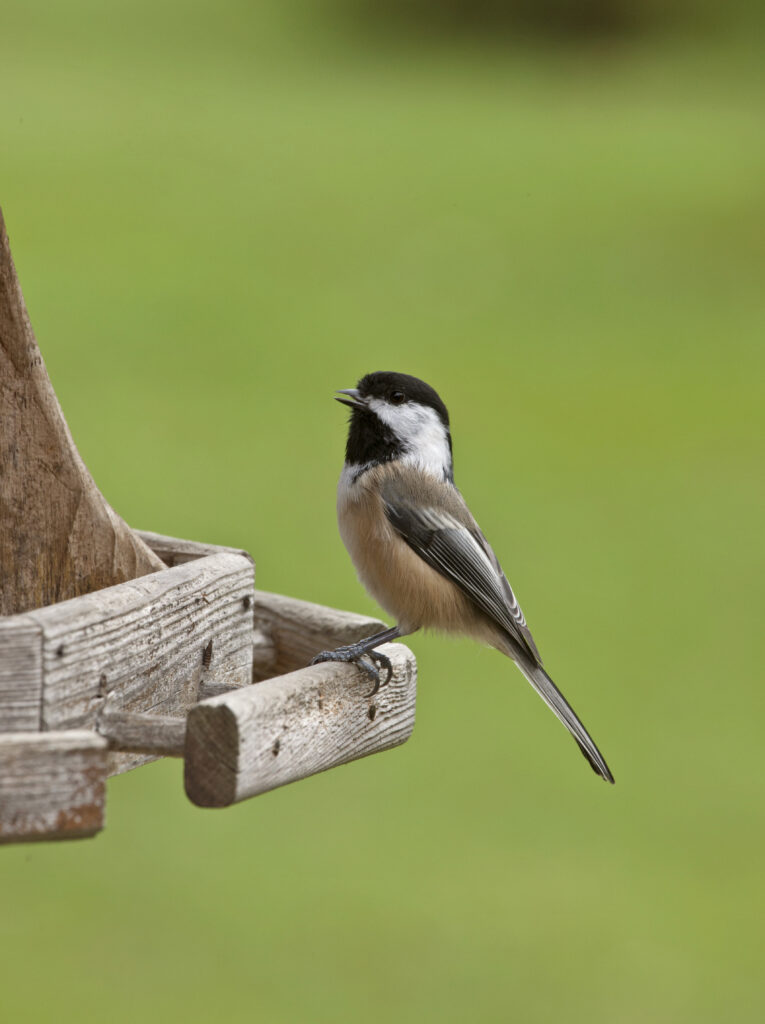
The black-capped chickadee’s scientific name is Poecile atricapillus.
Black Cap Chickadee vary from 7 to 5.9 inches in length and 3 to 8.3 inches in wingspan.
Their weight is from 3 ounces to 0.5 ounces.
These small birds are visible all year and feature a black cap and bib that contrasts sharply with their white faces.
The remainder of their physique is a mixture of black and white.
When you place a new tube, tray, or hopper feeder in your yard, Black-Capped Chickadees will be one of the first birds to greet you.
Seeds, particularly black sunflower seeds, insects, and berries, are favorites.
Below are the characteristics of the Black Cap Chickadee,
| Scientific Name | Poecile atricapillus |
| Length | 12 – 14 cm (4.7 – 5.5 in) |
| Weight | 9 – 14 g (0.32 – 0.49 oz) |
| Wingspan | 18 – 22 cm (7 – 9 in) |
| Habitat | Coniferous and deciduous forests, woodlands, parks |
| Food | Insects, seeds, nuts, berries, suet |
18. American Robin

The American robin’s scientific name is Turdus migratorius.
They are approximately 9.0 to 11.0 inches in length and 14.7 to 16.5 inches in wingspan. They vary from 2.3 to 2.8 ounces in weight.
The American Robin is not just a famous backyard visitor but Michigan’s state bird.
Its greyish-brown body is contrasted with a rusty orange underbelly and a matching beak.
These birds prefer worms and other tiny invertebrates. They aren’t keen on seeds; therefore, they don’t frequent feeders.
To encourage them to your yard, you can utilize mealworms and fruiting plants. Insects, berries, and seeds, particularly black sunflower seeds, are favorites.
Below are the characteristics of the American Robin,
| Scientific Name | Turdus migratorius |
| Length | 25 – 28 cm (9.8 – 11 in) |
| Weight | 65 – 90 g (2.3 – 3.2 oz) |
| Wingspan | 34 – 43 cm (13 – 17 in) |
| Habitat | Woodlands, forests, fields, suburbs, parks |
| Food | Worms, insects, fruits, berries |
19. Red-Winged Blackbird
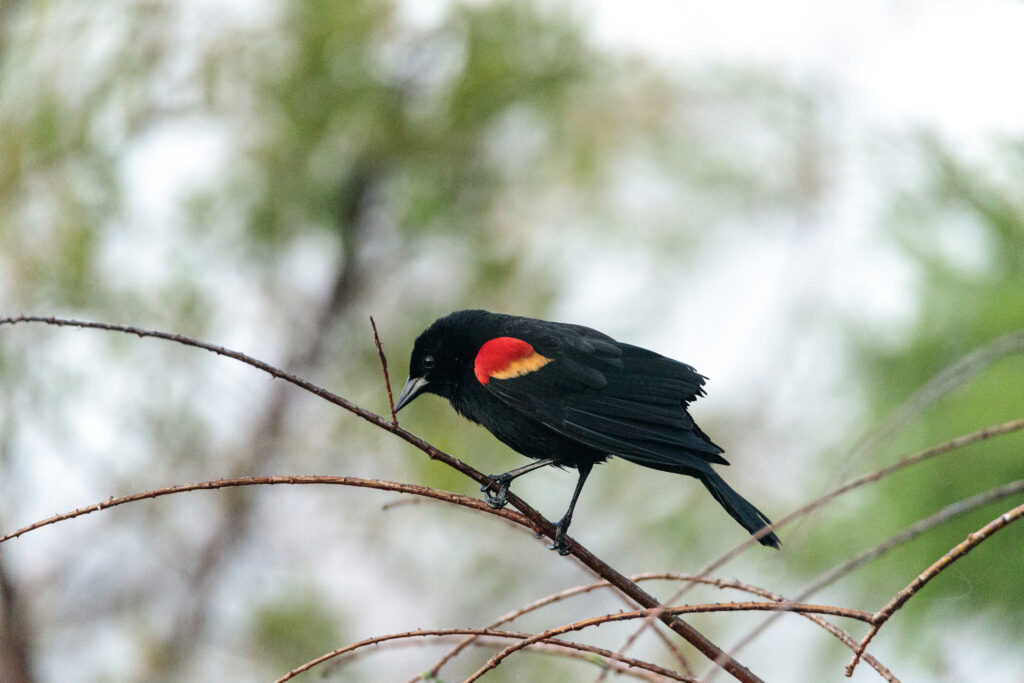
The red-winged blackbird’s scientific name is Agelaius phoeniceus.
These birds range from 7 to 9.1 inches in length, and their weight ranges from 1.1 to 2.7 ounces.
Their wingspan ranges from 12.2 to 15.8 inches.
The red wings of blackbirds make them one of the most immediately recognized birds in North America.
Females of this species are predominantly brown with some yellow accents and have a distinct appearance.
They are a polygynous species, which means males can mate with up to 15 different females.
In Michigan, blackbirds are only seen during the breeding season, so look for them in the spring and summer.
Red-winged Blackbirds visit a variety of feeders and consume both seed and suet.
Below are the characteristics of the Red-Winged Blackbird,
| Scientific Name | Agelaius phoeniceus |
| Length | 20 – 24 cm (8 – 9.5 in) |
| Weight | 40 – 62 g (1.4 – 2.2 oz) |
| Wingspan | 33 – 40 cm (13 – 16 in) |
| Habitat | Wetlands, marshes, fields, meadows, agricultural land |
| Food | Seeds, insects, spiders, snails, small fish |
20. Common Grackle

The common grackle’s scientific name is Quiscalus quiscula.
The size of Common Grackle varies in length from 11.0 to 13.4 inches and 14.2 to 18.1 inches in wingspan.
They have a weight range of 2.6 to 5.0 ounces.
Grackles, like starlings, belong to the bully bird family, yet their shimmering feathers make them extremely attractive in the proper light.
They are mostly black and they will lodge with some other blackbird species, sometimes in massive flocks of millions.
Their uniform coloration and yellow-ringed eye make them simple to spot.
Except for a tiny part of southern Michigan, where they live all year, grackles are only seen in Michigan during the mating season.
Grackles are foragers and eat almost anything; they are frequently seen as pests.
Below are the characteristics of the Common Grackle,
| Scientific Name | Quiscalus quiscula |
| Length | 28 – 33 cm (11 – 13 in) |
| Weight | 70 – 100 g (2.5 – 3.5 oz) |
| Wingspan | 43 – 48 cm (17 – 19 in) |
| Habitat | Wetlands, marshes, fields, meadows, agricultural land, urban areas |
| Food | Seeds, insects, spiders, snails, small fish, garbage |
21. Baltimore Oriole

The Baltimore oriole’s scientific name is Icterus galbula.
The length of a Baltimore Oriole ranges from 6.7 to 7.5 inches, with a weight range of 1.1-1.4 ounces.
Their wingspan range is 9.1 to 11.8 inches.
Males have a black hood over their heads, dark backs with white wing bands, and orange chests and underbodies.
They also have a rump and tail feathers that are orange.
Females have a considerably more subdued yellowish-orange coloration.
Baltimore Orioles are wild birds that only visit certain parts of the country, including Michigan, to breed.
In the early spring and early summer, keep an eye out for them.
Orioles are berry-eating birds that favor dark-colored berries and fruits.
If you have natural fruit-bearing trees and plants in your backyard, you have a good chance of attracting Baltimore Orioles.
Set up an oriole feeder and provide jelly and orange halves to attract orioles to your yard.
Below are the characteristics of the Baltimore Oriole,
| Scientific Name | Icterus galbula |
| Length | 16 – 20 cm (6.3 – 7.9 in) |
| Weight | 30 – 45 g (1.1 – 1.6 oz) |
| Wingspan | 25 – 29 cm (9.8 – 11.4 in) |
| Habitat | Woodlands, gardens, parks, orchards, and suburban areas |
| Food | Nectar, fruit, insects, spiders, caterpillars |
22. Gray Catbird
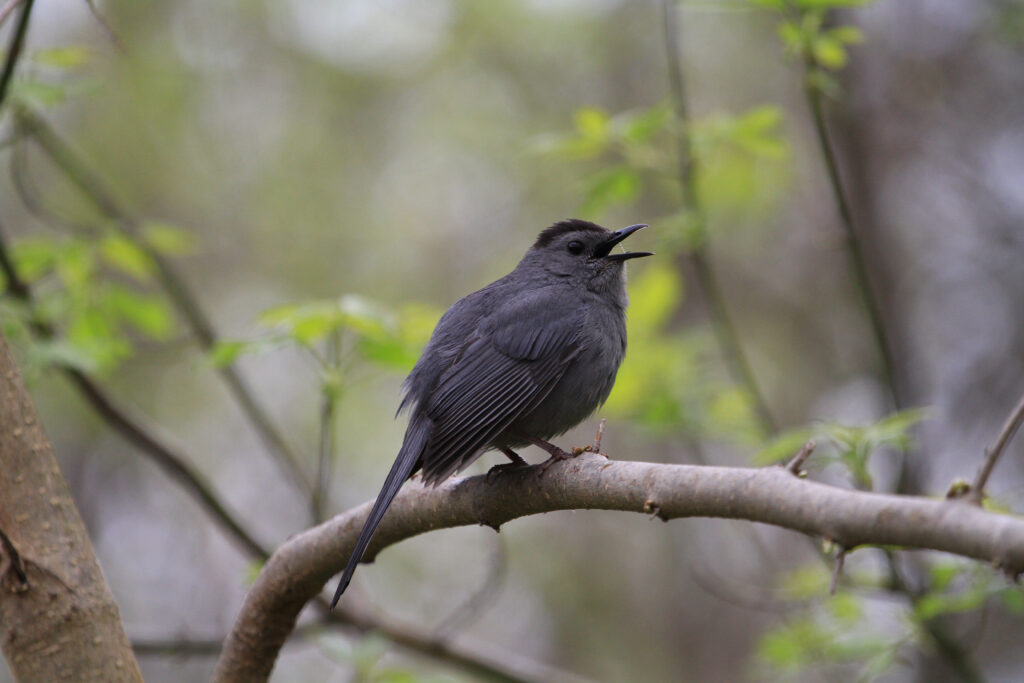
The gray catbird’s scientific name is Dumetella carolinensis.
The weight of a Gray Catbird ranges from 0.8 to 2.0 ounces.
Their size ranges between approximately 8.3 to 9.4 inches and their wingspan from 8.7 to 11.8 inches.
Most Catbirds have dark slate grey plumage, black crowns on their heads, blackish-grey wings, and long tails.
Because they are primarily fruit-eating birds, natural fruit-bearing trees and shrubs should be used to attract them.
Their cries, which resemble those of a meowing cat, have earned them the moniker catbird.
Gray Catbirds are only seen during the mating season in Michigan and the rest of the United States.
Fruits, berries, and other delicious treats can be used to attract catbirds, although they prefer to forage for food on the ground or in bushes.
Below are the characteristics of the Gray Catbird,
| Scientific Name | Dumetella carolinensis |
| Length | 25 cm (9.8 in) |
| Weight | 29 – 35 g (1.0 – 1.2 oz) |
| Wingspan | 29 cm (11.4 in) |
| Habitat | Deciduous forests, woodlands, parks, gardens, and suburban areas |
| Food | Berries, insects, spiders, and caterpillars |
23. Ruby-Throated Hummingbird

The ruby-throated hummingbird’s scientific name is Archilochus colubris.
These birds vary from 2.8 to 3.5 inches in length and 0.1 to 0.2 ounces in weight.
Their wingspan is between 3.1 and 4.3 inches.
Ruby-throated Hummingbirds are the most abundant hummingbird species in the country; however, they are only found in the eastern part of the country.
It is now the only hummingbird type in the Eastern United States that breeds.
Males have a brilliant ruby-red neck, which gives them their name.
The backs, wings, and heads of Ruby-throated Hummers are light green, with a white underbelly.
Red throat feathers are absent in females.
There may be a few odd migratory species here and there, but Ruby-throated Hummingbirds are the most common hummingbirds in Michigan.
From spring through fall, they may be seen all over the state. If you set out nectar feeders in your backyard, Ruby-throated Hummingbirds are pretty frequent.
Below are the characteristics of the Ruby-Throated Hummingbird,
| Scientific Name | Archilochus colubris |
| Length | 7 – 9 cm |
| Weight | 2.5 – 3.6 g |
| Wingspan | 13 – 15 cm |
| Habitat | Deciduous or mixed forest, especially near water |
| Food | Nectar and small insects and spiders |
Conclusion
In conclusion, Michigan is home to a diverse range of bird species, including many common species such as the
- Northern Cardinal
- Mourning Dove
- American Goldfinch
- Blue Jay
- American Crow
- Downy Woodpecker
- Song Sparrow
- Tufted Titmouse
- Northern Flicker
- Hairy Woodpecker
- Dark-eyed Junco
- House Finch
- European Starling
- House Sparrow
- Red-bellied Woodpecker
- White-breasted Nuthatches
- Black cap Chickadee
- American Robin
- Red-winged Blackbird
- Common Grackle
- Baltimore Oriole
- Gray Catbird
- Ruby-throated Hummingbird
These birds can be easily identified by their distinctive physical characteristics and behaviors, such as their plumage, bill shape, and vocalizations.
Whether you are a seasoned birder or a newcomer to the hobby, observing and learning about these 23 common birds in Michigan is a rewarding experience that can deepen your appreciation for the natural world.
FAQ
What are some common bird species found in Michigan?
Some of the most common bird species found in Michigan include the American robin, red-winged blackbird, Baltimore oriole, gray catbird, ruby-throated hummingbird, and house sparrow.
What are some characteristics that can help in identifying common birds in Michigan?
Physical characteristics such as plumage, bill shape, and size, as well as behaviors such as vocalizations and feeding habits, can be useful in identifying common birds in Michigan.
Where can I find common birds in Michigan?
Common birds in Michigan can be found in a variety of habitats, including forests, wetlands, and urban areas. Some species, such as the American robin and house sparrow, are commonly seen in residential areas, while others, such as the ruby-throated hummingbird, prefer natural habitats such as forests and wetlands.
What is the best time of year to observe common birds in Michigan?
The best time to observe common birds in Michigan depends on the species, but many are most active during spring and summer when they are breeding and raising their young. Winter is also a good time to observe bird species that remain in Michigan during the colder months, such as the red-winged blackbird and Baltimore oriole.
What equipment do I need to observe birds in Michigan?
To observe birds in Michigan, you will need a good pair of binoculars, a field guide, and a notebook for recording your observations. A birding app or a bird call guide can also be helpful in identifying species by their songs and calls.
Last Updated on March 22, 2023 by Lily Aldrin

Thank you so much, my husband and I are avid feeders of the birds in Michigan. We love to watch them and their inter action all year long and have for the last 50 years .
hello my name is michelle k i am looking for a bird that make there nest on the ground in my flower garden this is the first time i seen the nest in my flower garden . i live in nothen michigan in mancelon mich it fether look like lite brown and black with a little gray and white i di not mess with the nest i love birds very much so if you could put a picture on here for me so i know what it is i feed the birds all year long out frount and that where my flower garden is too
thank you so much .